
Animal
16:58, 17-May-2019
Giant panda Bai Yun: 23 years away from home
CGTN
00:52

On the afternoon of May 16, female giant panda Bai Yun, 27, finally returned to her home in southwest China's Sichuan Province after 23 years of living abroad. Accompanying her was her 6-year-old son Xiao Liwu, which mean “little gift” in Chinese.
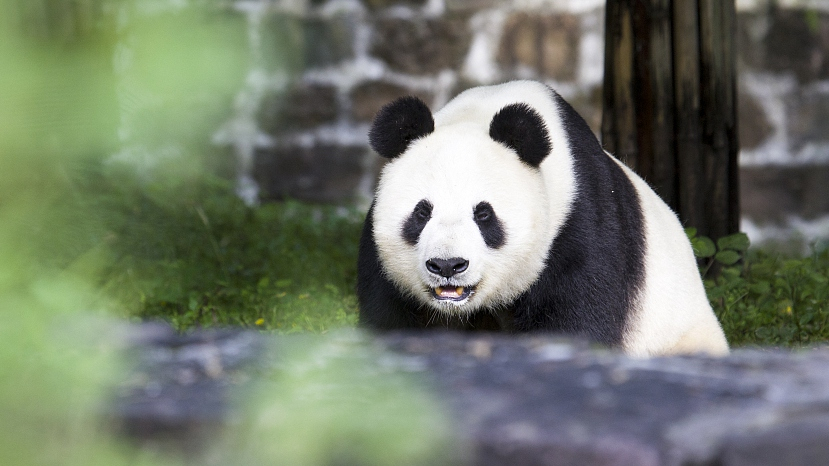
Giant panda Bai Yun at the Dujiangyan Base of the China Conservation and Research Center for Giant Pandas. /VCG Photo
Giant panda Bai Yun at the Dujiangyan Base of the China Conservation and Research Center for Giant Pandas. /VCG Photo
As the first panda on loan, Bai Yun arrived at the San Diego Zoo in 1996. This furry black and white bear soon became the star of the zoo.
Bai Yun has six children, and Xiao Liwu, born in July 2012, is the youngest of all. Bai Yun's first child Hua Mei was born in 1999 and was the first giant panda born in the United States to survive to adulthood. In 2003, she gave birth to Mei Sheng, then Su Lin (2005), Zhen Zhen (2007), and Yun Zi (2009).
Today, Bai Yun is a mother of six, a grandmother of eight, and a great-grandmother of two.
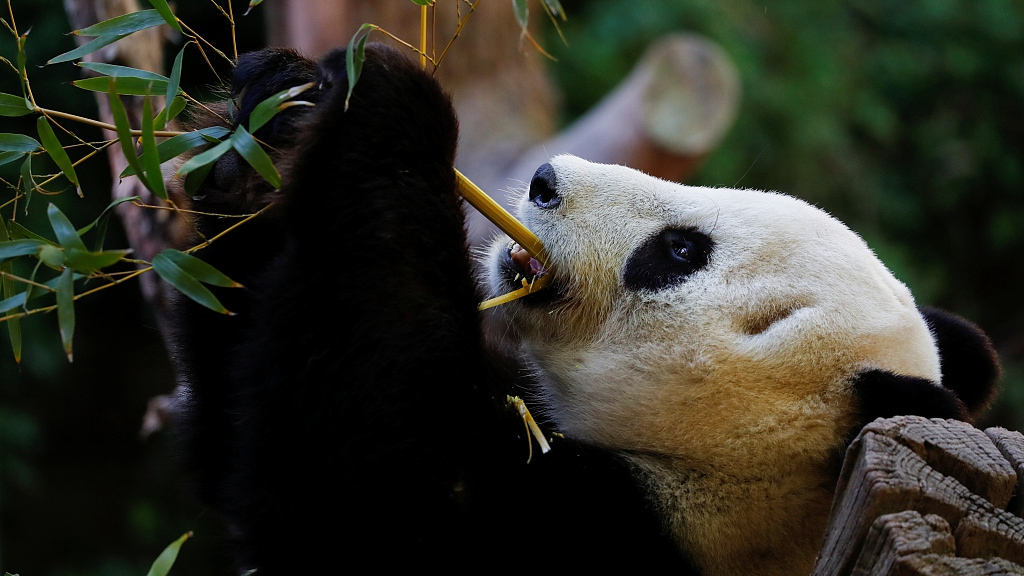
The 6-year-old Xiao Liwu. /VCG Photo
The 6-year-old Xiao Liwu. /VCG Photo
This pair of returnee giant pandas will reside at the Dujiangyan Base of the China Conservation and Research Center for Giant Pandas. Upon their arrival, experts examined their health. The two cuddly bears are now in good condition.
"They will be under quarantine for a month to help them adapt to the conditions in China," said Zou Wenyong, an expert at the center.
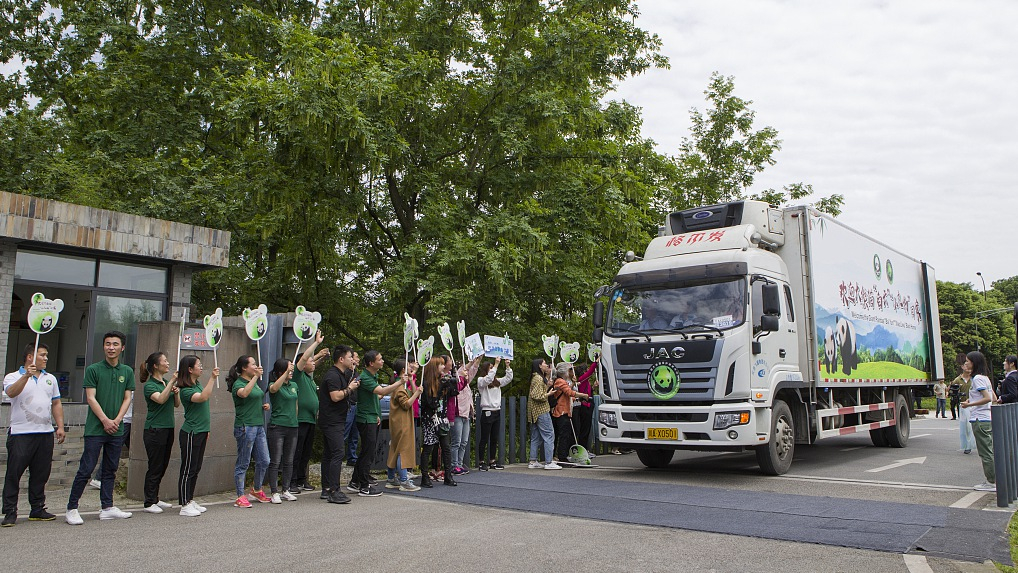
A welcome ceremony was held at the Dujiangyan Base of the China Conservation and Research Center for Giant Pandas. /VCG Photo
A welcome ceremony was held at the Dujiangyan Base of the China Conservation and Research Center for Giant Pandas. /VCG Photo
In April, the San Diego Zoo held a three-week farewell event for the two giant pandas. Around 1,000 American visitors lined up at the zoo to say goodbye to the pandas.
Global cooperation
Giant pandas are one of the world's most endangered species. Fewer than 2,000 pandas live in the wild, mostly in the provinces of Sichuan and Shaanxi.
In 1980, the Chinese government cooperated with the World Wide Fund for Nature to establish the "China Conservation and Research Center for the Giant Panda" (CCRCGP) to save the endangered species. The center aimed at raising the number of pandas by captive-breeding programs, but its ultimate goal was to return them to the wild.
There were 375 giant pandas in captivity at the end of 2013, and about 200 of them are at the CCRCGP.
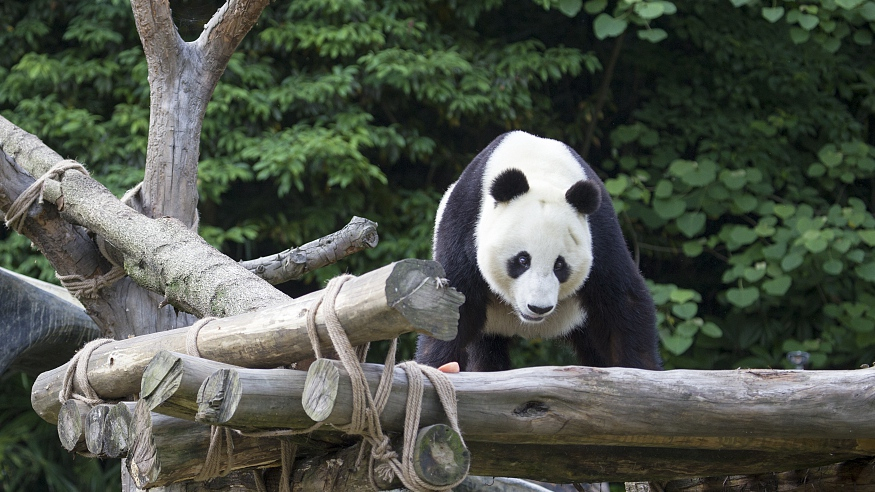
Xiao Liwu plays on a wooden platform at the Dujiangyan Base. /VCG Photo
Xiao Liwu plays on a wooden platform at the Dujiangyan Base. /VCG Photo
The CCRCGP has conducted scientific research cooperation with the San Diego Zoo for 23 years with fruitful results in the protection, breeding, disease control of giant pandas and related public education.
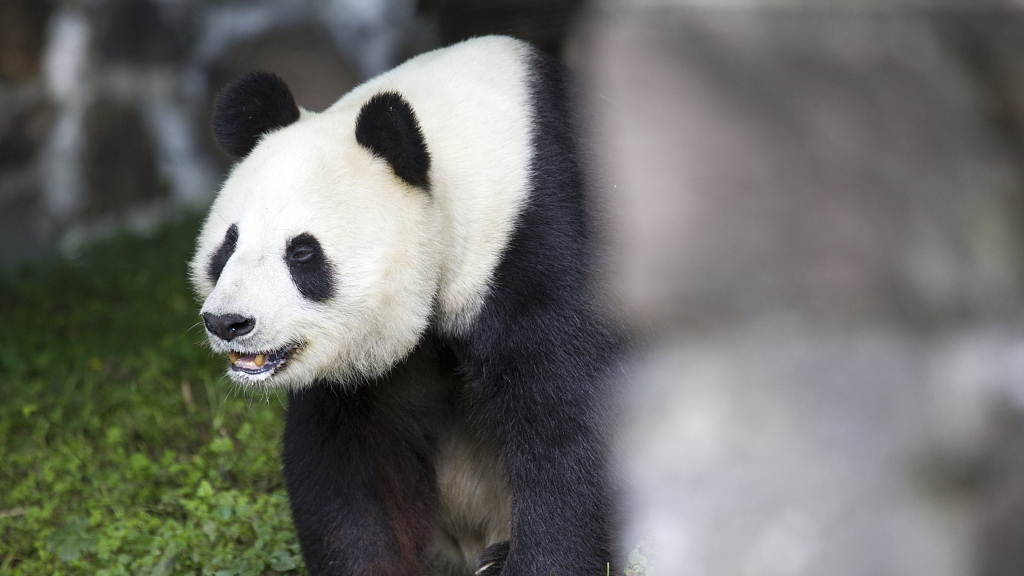
Bai Yun takes a stroll in her new residence. /VCG Photo
Bai Yun takes a stroll in her new residence. /VCG Photo
With Bai Yun and Xiao Liwu's return, the CCRCGP has welcomed 17 returnee giant pandas, said Zhang Zhizhong with the center.
Zhang added that the center has launched giant panda research programs in cooperation with 16 zoos in 14 countries and regions, serving as the world's largest platform for the scientific research of giant pandas.
(With input from Xinhua News Agency. Cover image: Bai Yun eats bamboo. /VCG Photo)
(If you want to contribute and have specific expertise, please contact us at nature@cgtn.com.)

SITEMAP
Copyright © 2018 CGTN. Beijing ICP prepared NO.16065310-3
Copyright © 2018 CGTN. Beijing ICP prepared NO.16065310-3